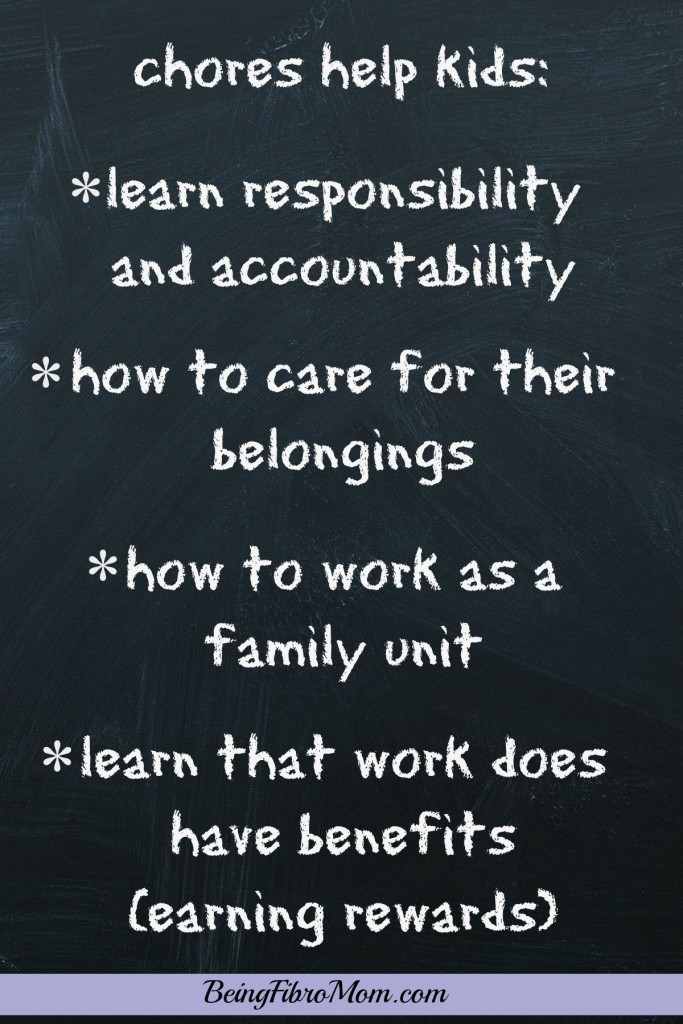If you have kids, you may have asked yourself, “Should there be chores for kids?” Many of us, myself included, kick the question around as we break a sweat doing our own set of chores repeatedly throughout the day. Here are the pros and cons of chores for kids.
Chores versus No Chores
The endless debate of getting kids to do chores versus not doing chores is a tiring one and one that you never seem to get the ‘right’ answer for. There are varying viewpoints on each side of the debate, and no one is wrong. Let’s analyze the general perspectives of doing chores and not doing chores.
Some say that chores for kids are beneficial and will teach them:
- responsibility and accountability,
- how to care for their belongings,
- how to work as a family unit, and
- Learn that work does have benefits, such as earning rewards.
Why some say that chores are bad for kids:
- They are kids – let them enjoy being a kid.
- It gives them a false impression of helping in hopes of being paid, not out of the kindness of their hearts.
- Chores can lead to spoiling the responsibility of handling money.
- Kids should not be taught to expect money when doing chores.
Both sides have reasonable opinions, whether you agree or not with one side or the other. There are even alternatives to chores. When in doubt, Discuss with your spouse or significant other (if applicable) what you think would be the best for your family. If you decide to have your kids do chores, keep reading. If not, please keep reading in case your family changes this decision later.

Allowance versus No Allowance
Now that you have agreed that chores are best for you and your children, there’s the debate about paying or not paying them for chores. There is no right or wrong answer. Again, discuss this with your spouse or significant other (if applicable), and decide what is best for your family.
There is a middle ground between paying them and not paying them. For example, our family does a mixture of the two. We give an allowance based on how they use teamwork to complete their chores and how much complaining they do throughout the week. Additional chores are available if they would like to make additional allowance. (They can ask me what can they do to make additional money. There are always ways they can help out. And half the time, they help to help. They don’t want or ask for the extra money.)
The Way We Do It
First, for our family, we have a list of essential chores they must do as a part of helping the family unit. Then, we team the kids up to tackle certain chores:
- Two oldest boys together (6th & 3rd graders)
- Oldest daughter with the youngest son (4th & 1st graders)
- Our 5 year old helps mommy clean her room and the upstairs hallway
We give each team a set of three chores that alternate each week. We keep track of color-coding the sets of chores on a blank calendar*. The calendar is kept at eye level in the kitchen. I usually do the chore calendars every three months, so I only spend one hour every three months rather than each month.
- The first set of three chores: living room, downstairs master bathroom, and their own bedroom
- The second set of three chores: dining room which includes sorting the recycling bin, upstairs kid bathroom, and their own bedroom
In addition, the three older kids also have to put away the clean dishes from the dishwasher and dish rack. This process alternates every three days, as shown in the image above.

Chores for Kids
Each room that is part of the chores has a checklist that contains daily and weekly chores. This eliminates any miscommunication about what is to be cleaned. The daily tasks are done, well, daily. Each Thursday, the kids must complete the daily AND weekly chores. The weekly chores used to be required each Friday, but that cuts into their weekend time. (I’m just as eager to start the weekend as they are.) Thursdays are better for this.
When they are finished each day, I check to ensure their chores are done. If, at the end of the week, there was good teamwork with minimal arguing and complaining, then we give each child a weekly allowance based on their age.
Allowances for Each Kid
These are the allowances we give our children (the amount does vary based on income and budget restrictions at the time):
- Older kids: $3 each per week
- Younger kids: $2 each per week
The entire amount is not given to the kids. We keep track of their money by using Google Spreadsheets. They track their allowance each week, putting 25% in their savings column and the rest in their spending account. This not only teaches them how to use the program but also shows them how much money they are adding up. My husband and/or I take the kids shopping the first weekend of each month to spend their allowance. Sometimes, they spend it, and sometimes they don’t if they are saving up for a particular toy.
Effects of the Chores and Allowance
Now that the kids see their money coming and going once a month, they appreciate the items they buy more. They are less hesitant to trade their toys with friends, and they take better care of what they do have. It also teaches them how to save up for something they really want rather than constantly asking for this and that. I’m not saying they never do it because they are still kids.
Since enacting this form of chores for our kids in September 2016 (which replaced our chore charts), there has been far less arguing and complaining about chores. It took about two weeks or so to become adjusted to the teamwork and alternating chores, but it was minimal adjusting. They prefer having a buddy to help, and more chores get accomplished. It’s a win-win situation.
Having their chores separated and enforced gives me fewer chores. Now, that doesn’t mean I spend less time doing chores. I still spend time doing my tasks, but it’s more manageable having a few chores rather than four times that many!
Here is how I manage my chores without aggravating my symptoms and causing a flare.

